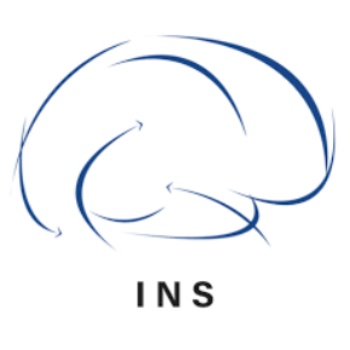[et_pb_section fb_built=”1″ use_custom_gutter=”on” specialty=”on” parallax_method_1=”off” parallax_method_2=”off” module_class=”m-special-section-modifier et_pb_specialty_fullwidth” _builder_version=”3.22″ inner_width=”89%” inner_width_tablet=”80%” inner_width_phone=”” inner_width_last_edited=”on|desktop” inner_max_width=”89%” inner_max_width_tablet=”80%” inner_max_width_phone=”” inner_max_width_last_edited=”on|desktop” custom_padding=”|||” transparent_background=”off” make_fullwidth=”on”][et_pb_column type=”3_4″ specialty_columns=”3″ _builder_version=”3.25″ custom_padding=”|||” custom_padding__hover=”|||”][et_pb_row_inner admin_label=”Row” _builder_version=”3.25″][et_pb_column_inner saved_specialty_column_type=”3_4″ _builder_version=”3.25″ custom_padding=”|||” custom_padding__hover=”|||”][et_pb_text admin_label=”Post content” _builder_version=”4.4.5″ background_size=”initial” background_position=”top_left” background_repeat=”repeat” module_alignment=”left” hover_enabled=”0″ text_font_size_tablet=”15px” text_font_size_phone=”14px” text_font_size_last_edited=”on|desktop” use_border_color=”off”]
If shining patterned light improves cognitive function sounds like science fiction, then brace yourself, because the idea is not far-fetched. Recent research findings show that light can fine-tune your brain to oscillate at gamma wave frequencies, which are associated with higher-order cognitive functions.
Brainwaves
Your brain, depending on what you are doing at a particular time, operates at different rhythmic patterns, or brain waves. Gamma brain waves, which oscillate at roughly 30 to 100 Hz, are associated with peak concentration and high levels of cognitive functions.
High levels of gamma brain wave activity correspond with increased memory recall, focus, processing speed and sensory perception. Low levels of gamma brain wave activity are linked to poor memory and slower information processing.
Unsurprisingly, gamma brain waves are known as the brain wave state of being “in the zone” and are present in high-level meditators.
Research
There are ample evidence supporting a gamma state of mind.
For one, several studies find gamma brain waves, which promote focus and feelings of happiness and calm, are deficient in people with depression. The increase in gamma activity in frontal and temporal regions in subjects with depression, such as light-induced stimulation, however, has been shown to improve spatial and arithmetic tasks, according to an EEG study.
Gamma rhythms are also associated with dementia. In a recent mice model study from MIT where light is used to stimulate gamma brain waves, researchers find that the stimulation of gamma brain waves reduces Alzheimer’s-related proteins—beta-amyloid and tau—and slows neurodegeneration associated with the disease. Increased gamma frequencies strengthen the synaptic function and improve learning and memory. The particular brain wave also boosts the activity of microglia in clearing damaged neurons and infections.
Gamma On
The application of safe, non-invasive light to the brain is called photobiomodulation. The Niraxx Brain Pacer is our first clothing-form wearable solution designed to provide effective, on-demand, non-medication light therapy. Tailored programs like Lift Up Mood, Find Focus and Increase Energy are designed to increase gamma brain waves. Discover peak performance in work and life rocking a gamma state of mind. Start today.
References
Akdemir AS, Kara S, Agambayev S, bilgic vedat. (2015). Nonlinear analysis of EEG in major depression with fractal dimensions. Conf. Proc. IEEE Eng. Med. Biol. Soc, 7410–7413.
Fitzgerald, P. J., & Watson, B. O. (2018). Gamma oscillations as a biomarker for major depression: an emerging topic. Translational psychiatry, 8(1), 177. https://doi.org/10.1038/s41398-018-0239-y
Martorell AJ, et al. (2019) Multi-sensory gamma stimulation ameliorates Alzheimer’s-associated pathology and improves cognition. Cell, 177(2):256-271.e22. doi: 10.1016/j.cell.2019.02.014. Epub March 14, 2019.
Roh SC, Park EJ, Shim M, Lee SH. (2016). EEG beta and low gamma power correlates with inattention in patients with major depressive disorder. Journal of Affective Disorders, 204:124-30. doi: 10.1016/j.jad.2016.06.033. Epub 2016 Jun 14. PMID: 27344621.
[/et_pb_text][et_pb_post_nav in_same_term=”off” _builder_version=”4.4.2″ title_text_color=”#000000″ use_border_color=”off” border_color=”#ffffff” border_style=”solid” hide_prev=”off” hide_next=”off”]
[/et_pb_post_nav][/et_pb_column_inner][/et_pb_row_inner][/et_pb_column][et_pb_column type=”1_4″ _builder_version=”3.25″ custom_padding=”|||” custom_padding__hover=”|||”][et_pb_sidebar area=”custom-sidebar-1″ _builder_version=”3.17.6″]
[/et_pb_sidebar][/et_pb_column][/et_pb_section]











